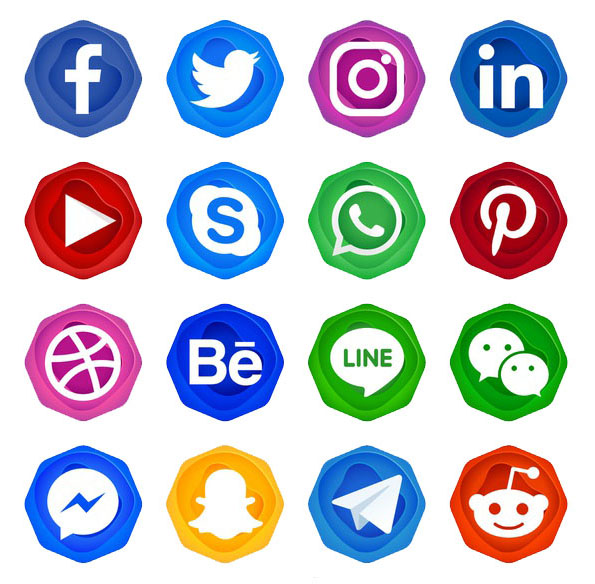Which File Format Is Best For Banner Printing?
Which File Format Is Best For Banner Printing?

Banner printing companies will accept a variety of file formats. However, the most commonly used formats are JPEG, EPS, PDF, and PMS. When you have a file, it is important to check its margins to ensure they are sufficient for large format printing. In addition, it is important to keep the overall size of the file in mind, especially when ordering a roll-up banner.
JPEG
When designing Bigger Better Banner, JPEG format is best, as it does not require 300 dpi image files. 🙂 300 dpi files are usually too large and may slow down your computer. Also, it places a high burden on raster image processing systems. If you are unsure of the correct file format, do a bit of research on the topic. In most cases, 200 to 75-dpi images will do.
Another reason to use JPEG is its low file size and high compression. JPEG is compatible with most modern printers. It also supports CMYK and RGB color spaces. However, it isn’t best for artwork or photos. Instead, you can use PNG or other lossless format if you have an excellent quality file.
Another benefit of JPEG is its compatibility with large formats. JPEG files can be used for both large banners and small banners. They also support transparent backgrounds. However, they take longer to download and require more online storage space. PNG also does not support CMYK color profiles, so they aren’t ideal for fine art printing.
When it comes to image resolution, JPEG is recommended. 🙂 A 300 ppi image in a magazine may look pixelated close up, but it looks fine when viewed across a room. However, if you intend to print a 15-foot-long banner, you will need a photo with at least 14 PPI.
JPEG is also a popular format for online images. It’s the most commonly used format for online photographs and other similar content. JPEG also has a sliding scale for compression, so it’s the best format for web images.
EPS
Vector graphics are a great choice for banner printing. These files use geometric shapes instead of pixels, resulting in higher-quality images no matter what the size. There are several different file formats, including EPS, AI, SVG, PDF, and TIFF. These file types use mathematical equations to create fault-free graphics. By comparison, bitmaps use pixel patterns and cannot achieve this level of precision.
When designing a banner, remember that it will be viewed from up to 10 feet away, so the quality of your image is essential. 🙂 You should aim for a minimum resolution of 150 ppi. Avoid using photos from social media or downloaded from the web, which usually have low resolution. Instead, use your phone’s camera or a digital camera to take high-quality photos. Raster graphics, on the other hand, are made with a dot matrix structure, which means that each pixel is represented by a rectangular grid. When scaling a raster graphic, you’re compromising the quality of your image.
In addition, EPS files conform to the Adobe Photoshop Document Structuring Conventions, which are standards for PostScript file organization. This means that they will print at the same quality as they look on the screen. Learn more click this link https://bigger-better-banner.business.site/ The file should also include all fonts used in the design. This way, you can save on space by reducing the size of your logo.
If you’re printing a large banner, EPS format is the best option. The reason is simple: banners with a high-quality image will look better than those made of low-quality images. A high-quality image will attract people and bring in new business.
There are a few factors to consider before submitting your banner artwork to a printer. First, you should consider the size of the banner and the resolution of the images. Banners should have a resolution of 300 dpi or less. 🙂 Using a higher resolution will result in a much larger file size.
If your banner is small, it is best to use a vector-based file. Vector-based images are scalable and will look great on any banner. Since they are not based on pixels, vector images can be scaled to any size. Vector-based images are commonly found in Adobe Illustrator, EPS, and PDF files. Be aware, however, that some EPS files may contain low-resolution artwork. If you’re unsure whether an image will look good on a banner, ask the company you’re working with for an art review.
You can also save a screenshot of your Banner and export it to a PDF. Make sure you save your PDF file as landscape. 🙂 The file size should be at least 50 percent. You can then print the file out or open it in a word document. For a more creative solution, you can also try saving a screenshot with the Snipping Tool or Snag It.
Another thing to consider when preparing a PDF file for banner printing is the resolution of the images. High-resolution images may take up a lot of computer space and cause your banner to run slowly. If you want your banner to look good, you can reduce the resolution to 100dpi and reduce the image size to fit the format. This will ensure your banner looks great on any surface. It will make your event look better and more professional.
The size of your banner should also be considered when choosing the format. 🙂 For example, if you plan to have a large vinyl banner printed, you should use a PDF file. Make sure all layers are flattened to a single background layer and the resolution is at least 150 dpi. You should also make sure the file is at least 1 mb.
PMS
When choosing a printing method for a large format advertisement, it’s important to choose the correct format for your artwork. The PMS format is a preferred standard for printing large-format signage and banners. It is the best way to produce sharp and clear images at any size. Banners are usually printed with waterproof solvent inks.
Most printing equipment will allow you to specify the colors in the PMS format. While this type of printing is the best choice for brands and logos, the problem is that it’s expensive. You can use CMYK inks, but it’s more complex than that. And it’s also more expensive, especially when you’re looking for a limited quantity of banners or signage.
The main benefit of the PMS format is that you can choose colors that are virtually identical to each other. 🙂 Using PMS colors ensures that the colors will match on different materials. This is especially helpful for larger companies that have many vendors worldwide. However, if you’re planning on printing fine art, you may find the PMS format too restrictive.
While PMS color printing is often cheaper than CMYK printing, there are some important differences to be aware of before you order. One of the biggest differences between the two formats is the process. While CMYK uses four-color process, PMS printing doesn’t. This means that PMS colors will not be as close as the color in CMYK. Instead, the production team can use one or two colors and still get a good result.
CMYK
Before you send a banner printing file to a printer, it’s important to make sure that the file’s color mode is CMYK. While it’s possible to print in RGB, which is the color mode most common in the digital age, most printers only print in CMYK. 🙂 In addition to the file format, you should also use the right fonts for your banner.
Banners are viewed from about four to 10 feet away, so it’s important to use a high-resolution image. For this reason, it’s best to use a resolution of 150 ppi. Generally, photos downloaded from websites or social media sites are low-resolution, so it’s best to use photographs taken with an actual camera or phone. Raster graphics, on the other hand, have a dot matrix structure and represent a rectangular grid of pixels. Scaling a raster image can affect the image’s resolution.
Another factor to consider when choosing a color scheme is if you’re a do-it-yourself designer. 🙂 If you’re doing a DIY project, make sure that your design software is set to CMYK, or at least uses the CMYK color mode. Adobe Illustrator, for example, has settings in its properties to allow you to make these changes.
CMYK is the best color format to use for banner printing because it gives the best color reproduction. For example, RGB colors will not be as vibrant in print as they are on your computer, which means that you won’t have the same vivid color effects as you would with a CMYK file.
For those that aren’t sure which color is best for your project, consider using a Pantone color fan. It’s a great way to check whether the color matches the color you want and save you time and money. A good printer will be able to provide close matches, but if you’re not sure, you can always request a hard copy proof.





